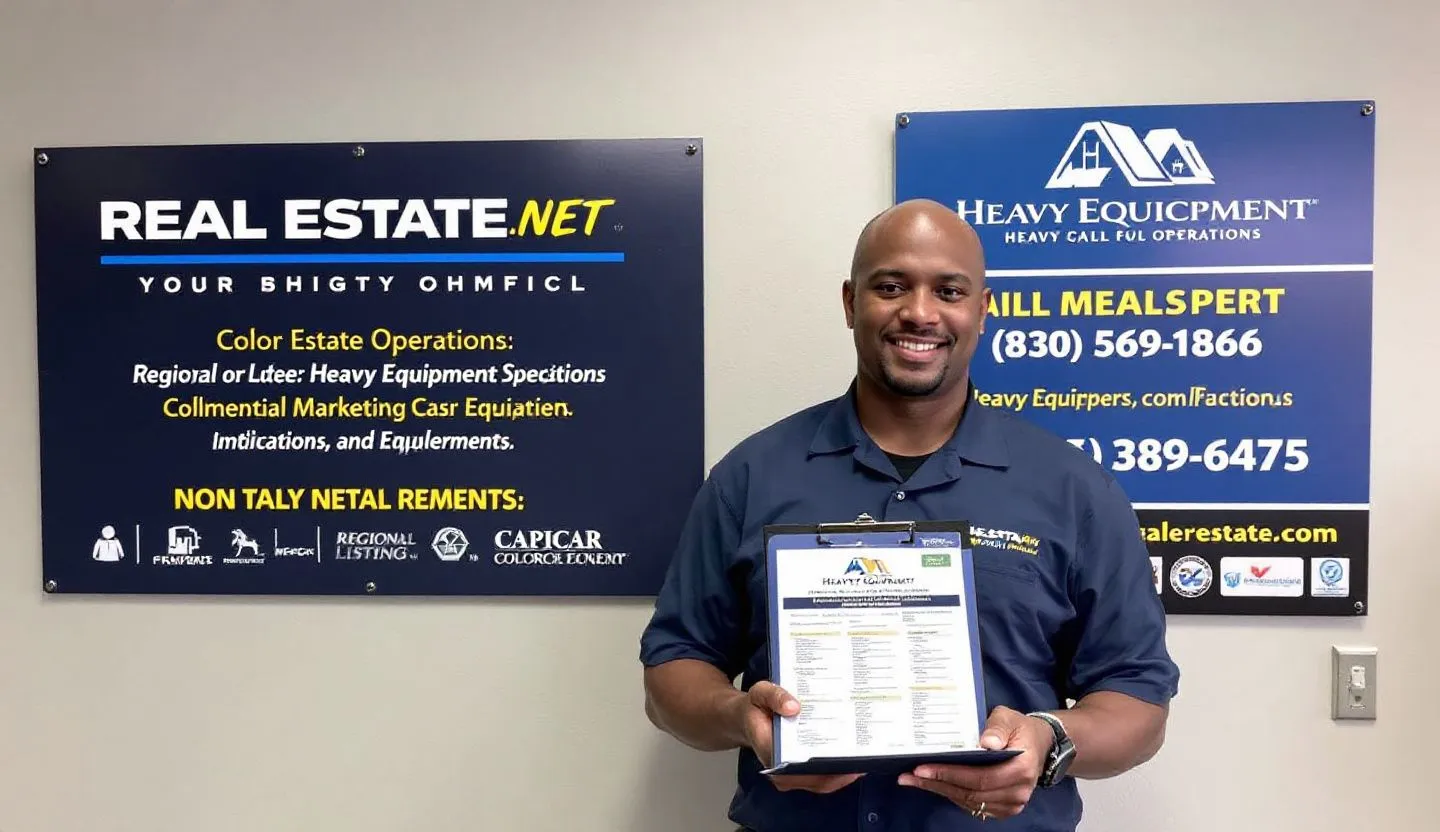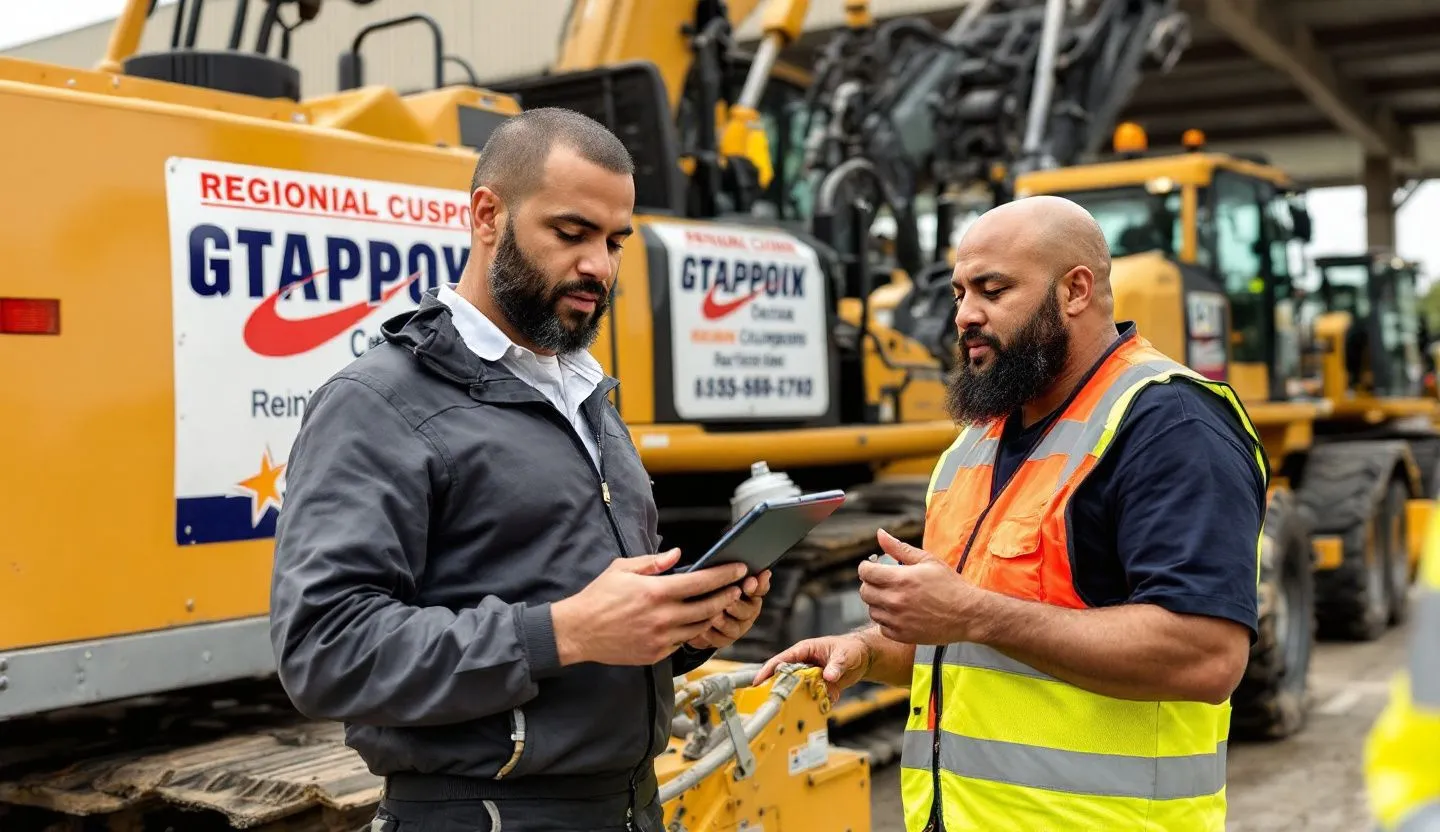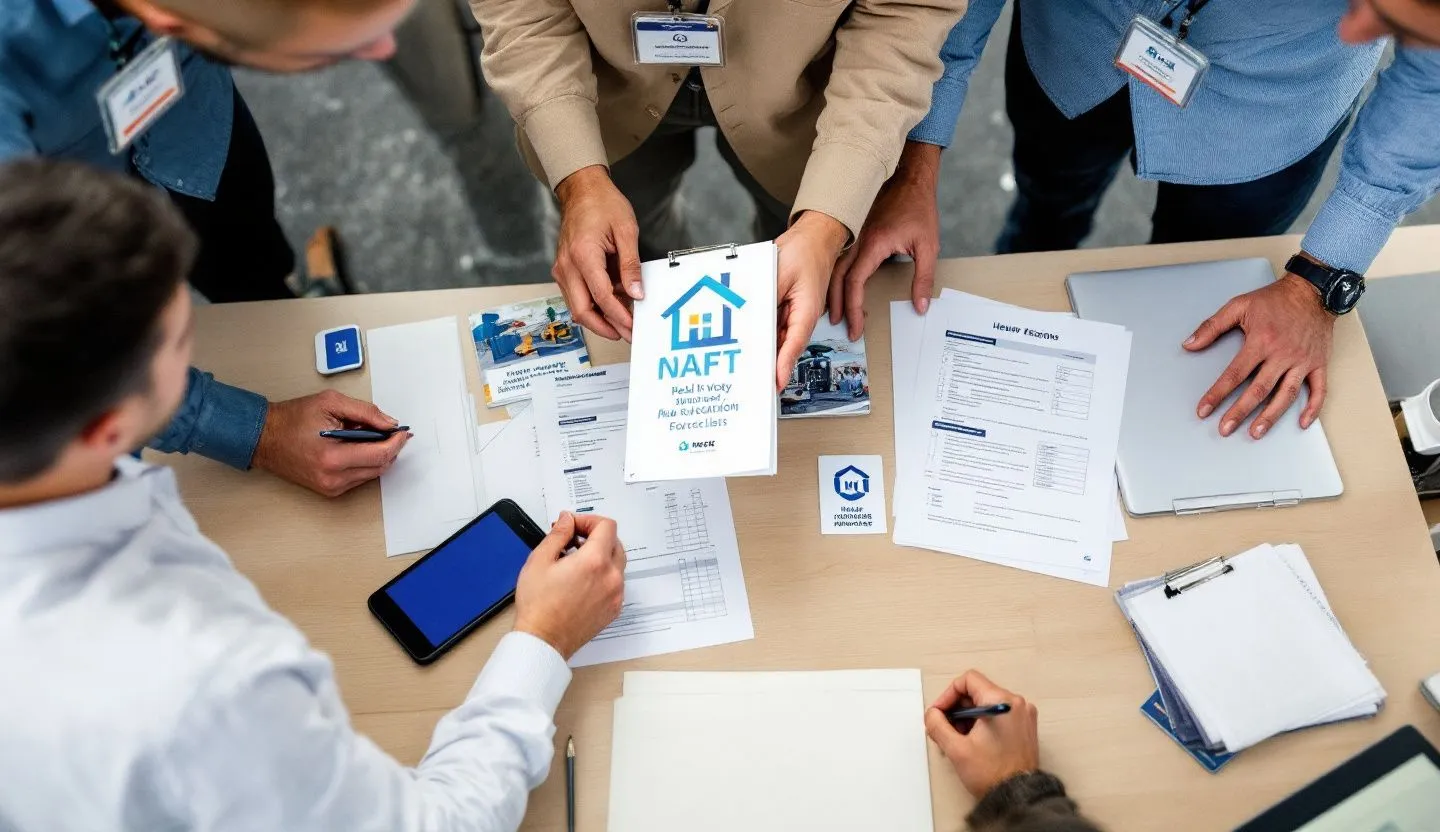As marketing leaders in the heavy machinery and equipment sector, we live in a world of high stakes and higher expectations. Every day, our teams stretch across continents, juggling dozens of product lines, fluctuating regulations, and a dizzying array of regional buyer personas. The mission is always the same: get the right message, in the right form, to the right market,fast, and without compromising on our brand’s integrity.
But here’s the rub. Every time we push a new product launch or update a compliance-driven spec sheet, we’re up against the same old pain: the slow, manual grind of content adaptation. Maybe you’ve seen it too,the endless back-and-forth with local dealers, the headaches of tracking down the latest regulatory nuance for a new market, the patchwork of creative files scattered from Munich to Mumbai.
We know that great content powers growth. But when our global content operations are slowed by regional complexity, every missed deadline and every inconsistent message chips away at our competitive edge. This isn’t just a marketing problem,it’s a business risk.
The real pain of regional content complexity in heavy machinery
Let’s be honest,regional customization for heavy machinery isn’t just about swapping out a language or adding a local phone number. We’re talking about technical specs that change with climate, safety disclaimers that shift with legislation, and visual branding that must honor both local dealer identity and the global mothership.
I’ve sat with marketing ops teams staring at spreadsheets, trying to track which brochure version is approved for which market. I’ve watched sales teams in the field fumble with outdated product data,one missing compliance badge away from a lost sale. And I’ve seen the stress on creative teams, churning through endless rounds of edits to fit a single campaign into a dozen regional molds.
These aren’t theoretical problems. Here are the daily realities many of us face:
- Version control chaos: When you manage hundreds of assets,operator manuals, spec sheets, safety signage,across dozens of countries, keeping track of which file is current is a full-time job. One slip, and you risk distributing obsolete or non-compliant information.
- Lost speed-to-market: Every hour spent translating a product catalog or reformatting a compliance tag is an hour competitors can use to leap ahead. Launches slow down. Dealer partners grumble. Revenue leaks.
- Brand dilution: With so many hands in the content pot, local teams often go rogue,tweaking logos, switching fonts, or even rewriting messaging to “fit” their region. The result? A fragmented brand that feels less trusted and less premium.
- Compliance and risk headaches: In regulated markets, a missing local safety disclaimer or a misinterpreted technical spec can lead to fines or, worse, legal exposure. The stakes are real, and the risks are rising as regulations evolve.
If any of this sounds familiar, you’re not alone. The complexity isn’t going away. But the way we handle it can,and must,change.
Why the old approach to localization no longer works
For years, content localization in the heavy machinery sector has been a patchwork affair. We’d email static PDFs to a local dealer, who’d hand it off to a freelance translator, then hope for the best. Sometimes, we’d invest in a “one-size-fits-all” translation tool,only to discover that literal translations fell flat with technical buyers or missed critical legal requirements.
But the world has shifted. Our buyers expect more,personalized, relevant content that speaks their language and reflects their local realities. Regulators are more vigilant, and the speed of digital transformation means that yesterday’s content is obsolete by tomorrow.
Here’s what’s different now:
- Markets move faster: New product lines, updates, and regulatory changes hit every quarter,not every year. If our content can’t keep up, we lose ground.
- Digital-first buyers: Today’s equipment buyers do their homework online. They expect accurate, up-to-date specs, pricing, and service details in their native language,on every device.
- Global teams, local needs: Our dealer networks, sales teams, and service partners need tools that empower them to act fast,without sacrificing brand standards or compliance.
- Rising compliance complexity: Each region brings its own set of safety standards, documentation protocols, and advertising restrictions. Getting this wrong isn’t an option.
We need a smarter, more integrated approach,one that transforms heavy machinery & equipment content localization from a bottleneck into a business advantage.
The shift to smarter content localization
We’re at a turning point. The next generation of content localization platforms is purpose-built for the realities of enterprise heavy machinery brands. These solutions aren’t just about translation,they’re about orchestrating every piece of your regional content workflow, from creative briefing to compliance sign-off.
What’s driving this shift? At its core, it’s a recognition that regional customization isn’t just a marketing checkbox,it’s a revenue lever. When we equip our teams with smarter tools, we unlock speed, control, and consistency. Suddenly, our global content operation becomes a strategic asset, not a liability.
Consider how smarter heavy machinery & equipment content localization delivers value:
- Centralized brand control: With a single source of truth for all creative assets, templates, and guidelines, global and local teams work from the same playbook. No more off-brand brochures or mismatched signage.
- Automated workflows: Localization requests, approvals, and compliance checks flow through an integrated platform. Manual handoffs and email chains vanish, replaced by clear status tracking and audit trails.
- Real-time regional customization: Local teams can adapt content,swap specs, update pricing, add region-specific certifications,within approved boundaries. This keeps messaging relevant and compliant, without the bottlenecks.
- Integrated translation and compliance: The best systems connect translation memory with legal and regulatory rules, so technical terms and disclaimers are always accurate. Review cycles shrink from weeks to days.
I’ve seen enterprise teams cut campaign localization timelines by 60%,not by working harder, but by working smarter. And the benefits aren’t just operational. When your brand shows up consistently and compliantly in every region, trust grows, and so does market share.
Real-world examples of content localization in heavy machinery
Let’s bring this to life with a few real scenarios from our industry.
Take the case of a global construction equipment manufacturer launching a new line of earthmovers in Latin America. The old way would have meant weeks of back-and-forth as local dealers translated specs and marketing teams reformatted product sheets for Brazilian and Chilean compliance. By the time the assets were ready, a competitor had already locked down two major deals.
Now, with a smarter content localization platform, the manufacturer creates a master brochure with modular content blocks,technical specs, warranty terms, service contacts,that can be instantly adapted for each market. Automated compliance checks flag any missing safety certifications or regulatory statements. Local teams personalize messaging and imagery within brand-approved templates. The result? Launch materials hit every regional market in days, not weeks, and every asset is on-brand, up-to-date, and compliant.
Or consider the challenge of supporting a dealer network in the Middle East, where safety signage must meet both English and Arabic regulatory requirements. A centralized localization platform allows marketing ops to push out updated signage templates across the network. Dealers simply select their region, and the system auto-fills the correct language, icons, and disclaimers. Compliance officers sleep easier. Field teams move faster.
These aren’t just nice-to-haves,they’re competitive advantages that drive real business outcomes.
How smarter localization accelerates global content operations
When we talk about acceleration, we’re not just chasing speed for speed’s sake. In heavy machinery, every day a product isn’t in market, we lose ground. Smarter content localization directly impacts our ability to execute at scale, without sacrificing quality or control.
Let’s break down what this looks like in practice.
Streamlined creative and compliance workflows
The old model,emailing PDFs, chasing approvals, hunting down the latest spec change,is a productivity killer. Modern localization platforms bring everything into a unified workflow. Creative, legal, compliance, and local teams all work from the same system. Tasks are assigned, deadlines are tracked, and audit trails are built in.
When a new regulatory update comes down the pipe,say, a revised emissions standard in Germany,the global team updates the master asset. The system auto-notifies local stakeholders, and compliance checks ensure no market is left with outdated information. What used to take weeks now happens in hours.
Modular content for faster adaptation
Heavy machinery content is inherently complex,think of the dozens of configuration options, technical illustrations, and regional certifications. The key is modularity. By breaking content into reusable blocks,spec sheets, safety labels, warranty terms,local teams can assemble assets tailored to their market, without starting from scratch.
This isn’t just a design nicety. It means new product launches, service updates, or regulatory changes can be rolled out globally with minimal friction. Your brand stays consistent, your content stays current, and your teams stay sane.
Connected translation and terminology management
Translation is more than words,it’s about technical accuracy, regulatory nuance, and brand tone. Integrated localization platforms store approved terminology for product names, technical terms, and legal disclaimers. Translation memory ensures that every time you launch a new excavator or update a safety bulletin, the language is precise and consistent.
This reduces the risk of errors, shortens review cycles, and builds confidence with both regulators and buyers.
The business impact of smarter localization
Let’s get practical. What does all this mean for enterprise marketing leaders, compliance teams, and operations executives? The benefits of heavy machinery & equipment content localization aren’t just theoretical,they’re measurable.
- Faster speed-to-market: With automated workflows and modular content, campaigns and product launches reach every region sooner. That translates directly to more sales opportunities and faster revenue recognition.
- Reduced operational costs: Manual localization is expensive,think translation fees, freelance designers, and hours of project management. Smarter platforms centralize and automate much of this work, freeing up resources for higher-value initiatives.
- Stronger brand consistency: When every asset flows through a single source of truth, you eliminate off-brand materials and rogue adaptations. Your global brand feels unified, premium, and trustworthy.
- Lower compliance risk: With built-in regulatory checks and audit trails, you minimize the chance of distributing non-compliant or inaccurate content. This protects against fines, legal exposure, and reputational damage.
- Empowered local teams: Dealers, sales reps, and field teams get the tools they need to personalize messaging within approved boundaries. This builds buy-in, accelerates execution, and drives local market growth.
I’ve seen global heavy equipment brands achieve 30–50% reductions in campaign localization costs, and 2x faster launch cycles, by embracing integrated content localization. The numbers are compelling,but the strategic advantage is even greater.
Common pitfalls and how to avoid them
Of course, no solution is magic. Even the smartest content localization strategy can stumble if we don’t address a few common challenges:
- Underestimating local nuance: It’s tempting to treat localization as a checkbox,translate, publish, done. But regional buyers care deeply about language tone, visual cues, and cultural context. Invest in local market insights and build flexibility into your templates.
- Overcomplicating workflows: The goal is to simplify, not add layers of approval. Design your platform and process to empower local teams, not slow them down. Define clear guardrails, then trust your people to execute.
- Neglecting change management: Rolling out a new platform or process is as much about people as technology. Invest in training, communicate the “why,” and celebrate early wins to build momentum.
- Ignoring integration with existing systems: Your localization platform should play nicely with your DAM, PIM, CRM, and compliance tools. Siloed systems create more problems than they solve.
The key is to approach heavy machinery & equipment content localization as an enterprise capability, not a marketing afterthought.
The role of IT, compliance, and operations in localization success
As much as marketing owns the brand, we can’t do this alone. Enterprise-grade content localization is a true cross-functional effort,one that brings together IT, compliance, legal, and operations.
IT teams are critical partners, ensuring that platforms are secure, integrated, and scalable. They help connect localization tools with existing systems,DAMs, ERPs, CRMs,so data and content flow seamlessly.
Compliance and legal teams provide the guardrails, defining which disclaimers, certifications, and regulatory statements must appear in each region. By embedding their requirements into the localization workflow, we minimize last-minute surprises and reduce risk.
Operations leaders bring process discipline, helping map out efficient workflows and track performance metrics. When everyone is aligned, heavy machinery & equipment content localization becomes a source of competitive advantage, not friction.
What to look for in a localization solution for heavy machinery
If you’re evaluating new technology or processes to support your content localization efforts, here’s what matters most:
- Enterprise-grade security and compliance: Heavy machinery data is sensitive,product specs, pricing, customer information. Your localization platform must offer robust access controls, audit trails, and data encryption.
- Integration with existing systems: Look for solutions that connect with your DAM, PIM, CRM, and compliance platforms. This reduces manual work and ensures a “single source of truth.”
- Modular content architecture: The ability to create, reuse, and adapt content blocks accelerates regional customization and minimizes rework.
- Automated workflow management: Approvals, compliance checks, and translation requests should flow seamlessly, with clear status tracking and reminders.
- Role-based access and guardrails: Local teams should have the freedom to adapt content within defined boundaries,without risking brand or regulatory compliance.
- Real-time reporting and analytics: Visibility into asset usage, localization cycle times, and compliance rates helps you optimize your operation over time.
Choose a partner that understands the unique needs of heavy machinery & equipment content localization,not just generic translation.
The future of regional customization in heavy machinery marketing
Looking ahead, the stakes for global content operations in heavy machinery will only rise. New markets will open. Regulatory complexity will grow. Buyer expectations for localized, digital-first experiences will keep climbing.
But with the right strategy and technology, what once felt like an impossible balancing act,speed, scale, and brand control,becomes not just possible, but powerful.
Imagine a world where your latest product launch hits every market, in every language, with compliant messaging, within days. Where your dealer partners feel empowered, not frustrated. Where your brand is trusted everywhere it appears.
That’s the promise of smarter heavy machinery & equipment content localization. It’s not about more work,it’s about better work, done faster, with less risk and more impact.
For those of us responsible for steering global marketing in the heavy machinery and equipment industry, the push and pull between speed, scale, and brand control is a daily reality. Regional complexity isn’t just a hurdle; it’s a source of constant operational tension, often slowing down launches, muddying brand consistency, and opening us up to compliance risk. The old way,fragmented processes, manual adaptations, and endless email loops,simply can’t keep pace with the speed of today’s markets or the demands of tomorrow’s buyers.
That’s why the evolution toward smarter heavy machinery & equipment content localization is so transformative. By centralizing assets, automating workflows, and building in compliance from the start, we turn a chronic pain point into a strategic capability. The result isn’t just faster campaigns or lower costs (though those are real and measurable). It’s a brand that shows up everywhere,accurate, trusted, and ready to win. By investing in the right technology, empowering our teams, and aligning across marketing, IT, compliance, and operations, we unlock a new level of global agility and local relevance. In a world where every market matters, that’s the edge we need.







